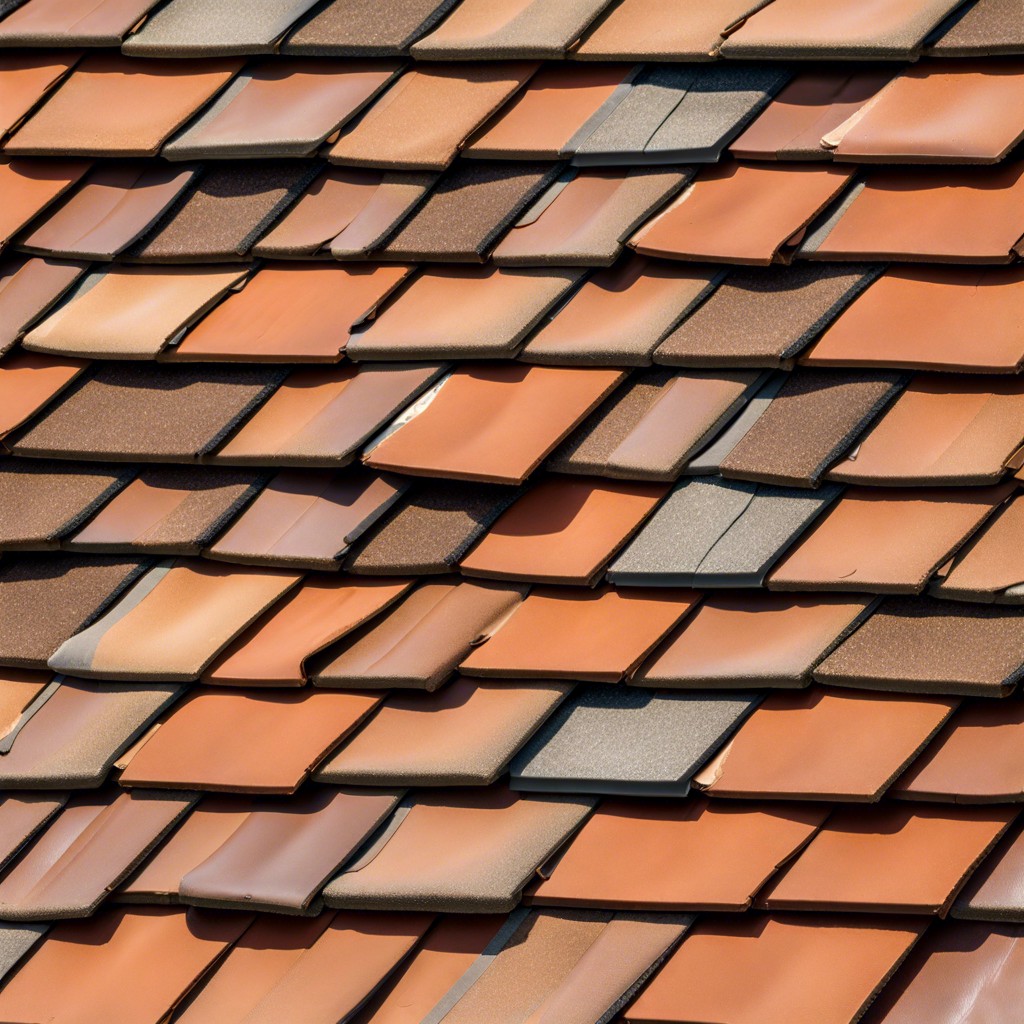Last updated on
Unraveling the complexities of roofing, the article focuses on providing insights into the permissible number of shingle layers for a sturdy and sustainable roof.
Key takeaways:
- Building codes often allow for a maximum of two layers of shingles.
- Consider the weight and load-bearing capacity of your roof.
- Multiple shingle layers can decrease the lifespan of your roof.
- Check with local building codes and regulations before adding layers.
- Consult a professional roofing contractor for guidance.
Legal Limits On Shingle Layers

Building codes often dictate how many layers of shingles may be installed on a roof. In many areas, two layers is the maximum allowed, while some local codes may restrict it to a single layer, especially in regions prone to heavy snowfall or high winds.
The intention is to maintain structural integrity and ensure safety. It’s paramount to check with the local building department before adding new shingles over an existing layer to avoid potential fines or the need to redo the work. Obtain the necessary permits to ensure that the roofing project is legally compliant.
If a roof already has two layers, it is typically required to remove them before installing a new roof.
Weight Considerations for Multiple Layers
Layering shingles adds significant weight to a roof structure. Standard asphalt shingles weigh roughly 2-4 pounds per square foot, and this can quickly add up with multiple layers. The added mass can lead to structural issues if the underlying framework isn’t capable of supporting the extra load.
Assess your roof’s load-bearing capacity: Engage a structural engineer or a roofing professional to evaluate your home’s ability to handle additional weight. Overloading can result in roof sagging or, in extreme cases, collapse.
Factor in the type of shingles: Different shingles have different weights. For instance, architectural shingles are heavier than 3-tab shingles. The type and quality of the original shingles can impact how much additional weight your roof can sustain.
Consider the longevity of your roof: Extra weight can reduce the life span of your roof. Multiple layers can trap heat and moisture, potentially causing the shingles to deteriorate faster.
Long-term cost implications: While adding a second layer of shingles might be economical in the short term, the long-term costs due to increased stress on the structure could be substantial. Removing multiple layers later will also be more expensive and labor-intensive.
Seasonal weather patterns: If your area is subject to heavy snowfall, the weight of the snow combined with multiple layers of shingles could exceed your roof’s weight limit.
By considering these factors, homeowners will be better equipped to determine if their roof can support an additional layer of shingles without compromising the integrity of their home.
Inspecting the Roof Structure
Before adding new layers of shingles, it’s crucial to assess the roof’s existing condition. A comprehensive inspection can reveal if the structure can safely support additional weight. Key elements to examine include:
- Decking Integrity: Check the plywood or OSB (oriented strand board) for signs of rot, warping, or damage. Weak decking will not support new shingles effectively.
- Truss Strength: Ensure that the trusses or rafters, which are the roof’s skeletal framework, are not compromised. Structural issues here can lead to catastrophic failures.
- Previous Shingle Layers: Look at how flat and even the current layer lies. Bumps or irregularities may indicate poor installation or roof wear.
- Ventilation: Proper attic ventilation prevents heat and moisture buildup that can deteriorate a roof from the inside out.
- Leaks and Water Damage: Be on the lookout for stains, mold, or dampness that might suggest past or present leaks.
- Sagging: This is a tell-tale sign that the roof may be structurally deficient. Any noticeable sagging requires immediate attention.
Always prioritize safety when inspecting a roof. If you are not experienced in performing roof inspections or if the roof is steep or high, consider hiring a licensed professional.
Local Building Codes and Regulations
Before layering shingles, it’s essential to check with your local building department. Codes vary by location, with some jurisdictions limiting homes to a single layer of shingles, while others may permit two or more. Compliance with these regulations not only ensures structural integrity but also avoids potential fines. Notably, even if codes allow for multiple layers, manufacturers’ warranties may be voided when new shingles are installed over old layers. It’s prudent to confirm these details to make informed decisions about your roofing project.
When to Consult a Professional Roofing Contractor
Seeking guidance from a professional roofing contractor is integral to making informed decisions about adding layers to your roof. Their expertise is invaluable in the following scenarios:
1. Roof Assessment: Contractors can thoroughly evaluate the condition of your existing shingles and the roof structure to determine if additional layers are feasible.
2. Code Compliance: Knowledgeable in local building codes, contractors ensure any work performed adheres to legal standards, thus avoiding costly fines or mandatory corrections.
3. Long-Term Investment: While adding layers may seem cost-effective, professionals can offer insights into how it might affect your roof’s longevity and performance, helping you weigh immediate savings against potential long-term costs.
4. Correct Installation: Proper installation is crucial to prevent issues such as leaks, and contractors have the right tools and techniques to install shingles correctly.
5. Warranty Considerations: Some manufacturers’ warranties may be voided if shingles are improperly installed or if specific installation criteria are not met. A contractor can help preserve your warranty coverage.
In summary, professional advice is essential to maximize the lifespan of your roof and ensure safety and compliance.
FAQ
How many layers of shingles can be safely on a roof?
The maximum number of shingle layers that can be safely placed on a roof, in compliance with most building codes, is two.
Is it OK to have 2 layers of shingles?
While it is technically possible to have two layers of shingles, it is not recommended due to the potential structural compromise and increased difficulty in fixing leaks.
Can you put 2 layers of shingles on a double wide?
No, you cannot put 2 layers of shingles on a double wide as mobile homes, including double-wides, are limited to a single layer of shingles.
How many shingles can you put on a roof?
The number of shingle layers you can put on a roof should not exceed two, as per building and city codes.
What are the potential consequences of installing multiple shingle layers on a roof?
Installing multiple shingle layers on a roof can result in premature aging due to excess heat buildup, increased roofing weight damaging the structure, and difficulty in identifying leaks or damages.
How does the number of shingle layers impact the roof’s longevity and durability?
The number of shingle layers directly impacts a roof’s longevity and durability, with multiple layers often adding weight and stress to the structure, potentially leading to premature failure.
What are some recommended alternatives to layering shingles on a roof?
Some recommended alternatives to layering shingles on a roof include metal roofing, slate tiles, clay tiles, concrete tiles, solar roofing, rubber roofing, and green roofs.
Related
- How Big is a Square of Shingles: Understanding Roofing Measurements
- How Much Weight Can a Roof Hold: Reliable Information for Understanding Roof Weight Capacity
- How Many Bundles of Shingles in a Square: Detailed Informational Guide
- Can Metal Roof Go Over Shingles?
- How Many Shingles Do You Need: Accurate Calculation for Your Roof Project

